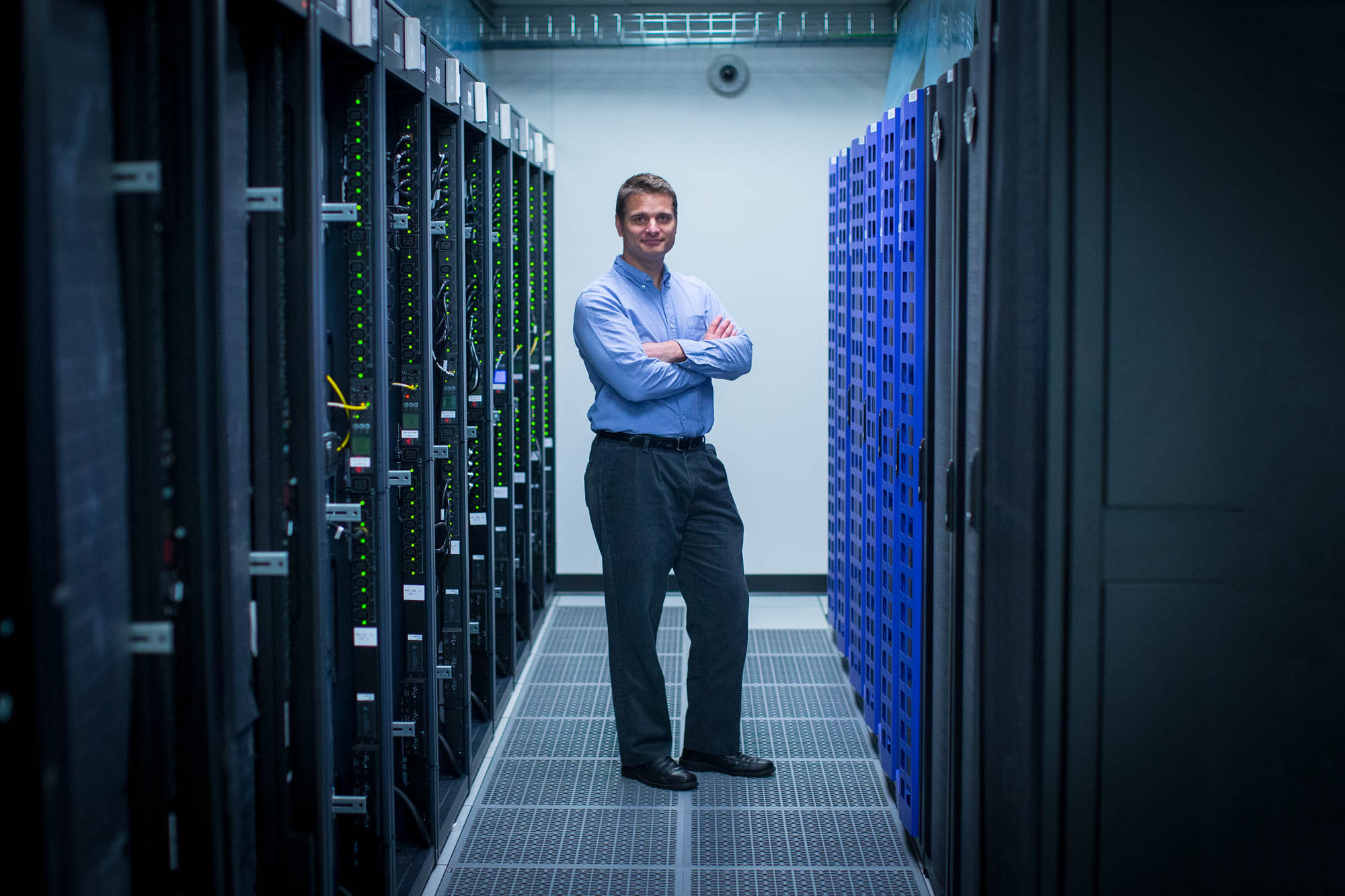Its name is Rivanna, and it’s the University of Virginia’s new $2.4 million Cray computing cluster, a high-performance machine – really a combination of linked high-power computers (hence, “cluster”) – designed to greatly enhance and establish computationally intensive and data-intensive research at the University.
“This cluster represents a significant investment in U.Va.’s computational infrastructure and capacity,” U.Va. President Teresa A. Sullivan said Thursday during a launch event for the machine at Thornton Hall. “It will help us advance our research in many different fields.”
Some of those fields include “big data” and computationally intensive areas of astronomy, molecular modeling in pharmacology, atmospheric chemistry simulations, high-energy physics data sorting, genome modeling, ocean currents modeling, a range of engineering problems, data mining, and large-scale text analysis, among others. The goal for the new acquisition is not only to enhance current research at the University, but also to attract vibrant new faculty who already are doing computationally intensive research.
“The capabilities of this high-performance cluster will enable us to do new explorations in science and develop new design solutions for engineering problems,” said Don Brown, director of U.Va.’s Data Science Institute, which provided major support for obtaining the new cluster.
Rivanna combines massive processing capacity with large amounts of memory to enable U.Va. to effectively compete with other research universities that are increasingly focusing on the big data and big computing projects that attract federal research funding. It is part of the University’s Cornerstone Plan, which seeks to enhance faculty recruitment, invest in research infrastructure and facilitate cross-school collaboration.
“We need to fill a space in our computing capacity at the University so our researchers, and future researchers, can be highly competitive for grants and research time at national labs with the most advanced computers,” said astronomer John Hawley, associate dean for the sciences in the College of Arts & Sciences and an early advocate for a strong computing resource center at the University. “To compete for top young faculty, we must provide computing infrastructure that will help them be successful.”
The new Cray cluster will provide the combined computational power of 4,800 individual central processing units, Hawley said, and 1,400 times more disk space than a PC.
“It’s the same as devoting 4,800 PCs to a single big task, all linked together to rapidly share data,” he said. “The new cluster is almost an order of magnitude more powerful than the one we’ve been using, with 10 times the storage space.”
In his own research, Hawley plans to use Rivanna for modeling the evolving action of magnetic gases that swirl around black holes, his area of astronomy. Other early users, among others, include Michael Shirts in chemical engineering, who will investigate molecular-level drug design, and Stephen Turner in public health sciences, who will use the cluster for genetics research.
Housed at the University Data Center, the Cray cluster is ready for all potential users who apply for computational time through their dean’s offices, said Michele Claibourn, director of research data services in the U.Va. Libraries and assistant director of data infrastructure and services at the Data Science Institute. She is helping to coordinate access to the cluster.
The U.Va. Advanced Computing Services & Engagement office, or UVACSE, will “serve users at the front end,” she said, “helping to increase the number of people who will come to see the usefulness of the new cluster for an array of research projects, including in the humanities and social sciences.”
The cluster was acquired through the collaboration of several schools and units, with support from the College, the School of Engineering and Applied Science, the U.Va. Libraries and the Data Science Institute.
“Today’s high-powered computing cluster launch is further evidence that the Cornerstone Plan is coming to fruition at U.Va. and preparing the University for a high-powered future in the years ahead,” Sullivan said.
Media Contact
Article Information
September 19, 2014
/content/uva-s-new-24m-computing-cluster-enhance-facilitate-big-data-research

